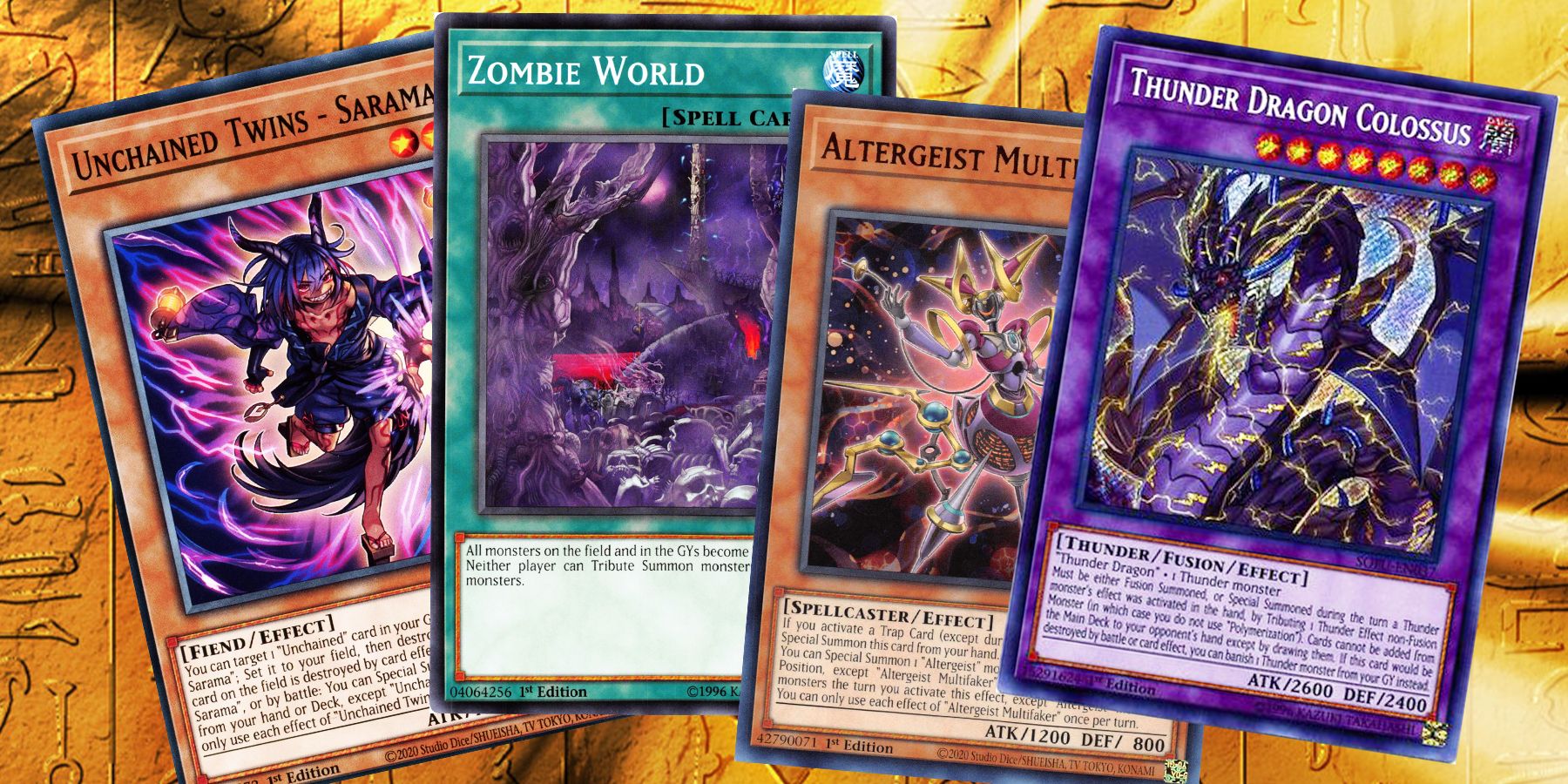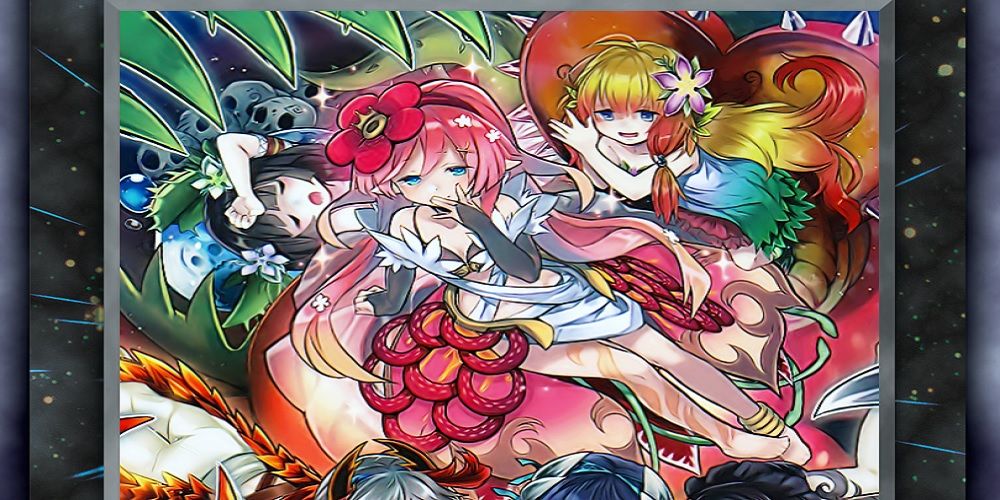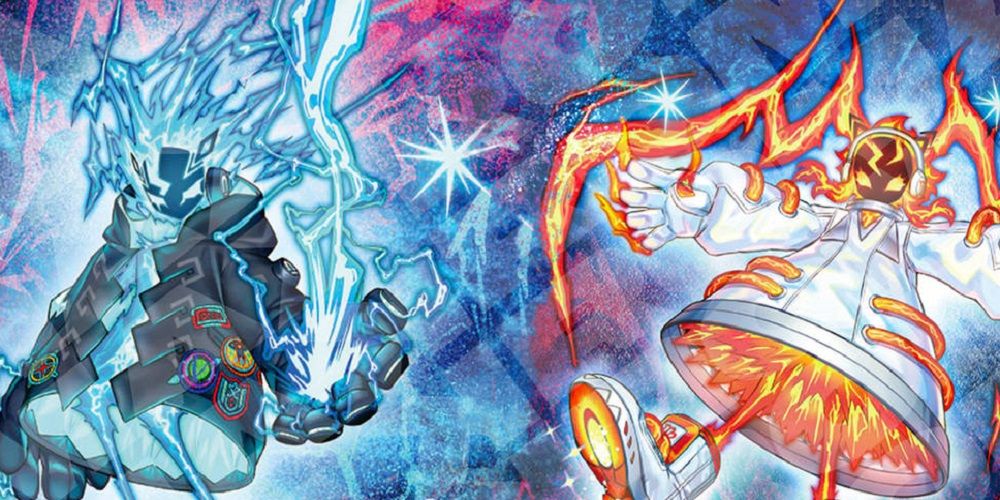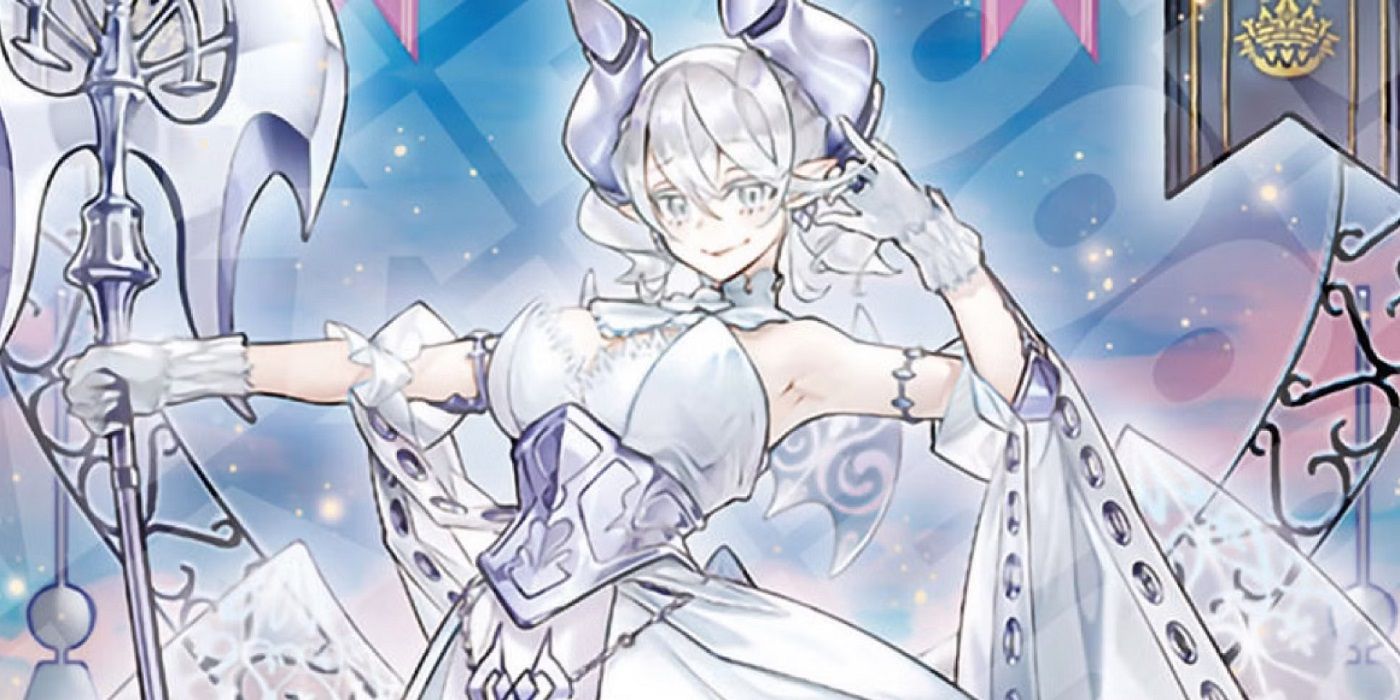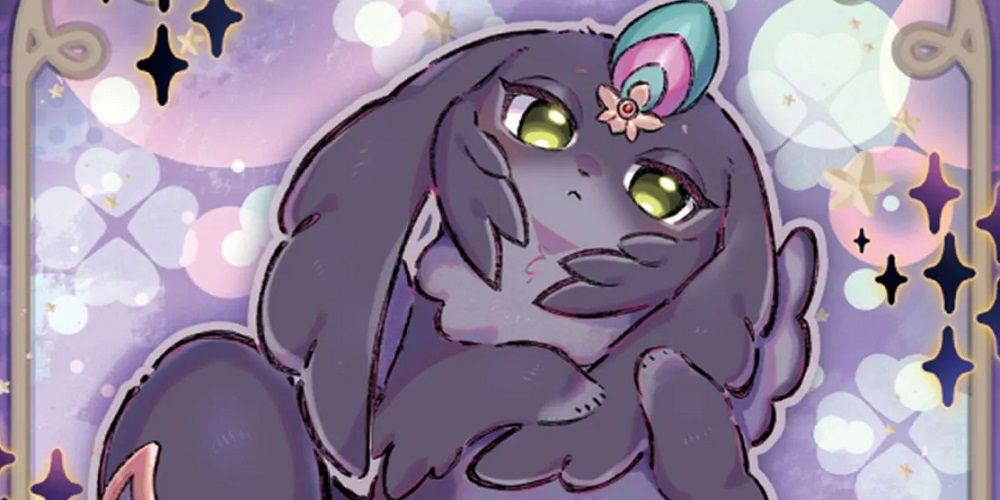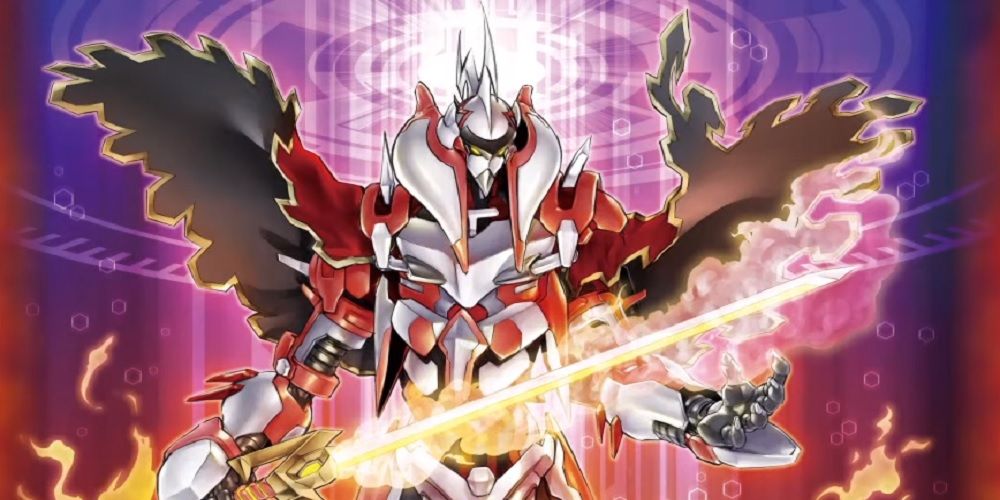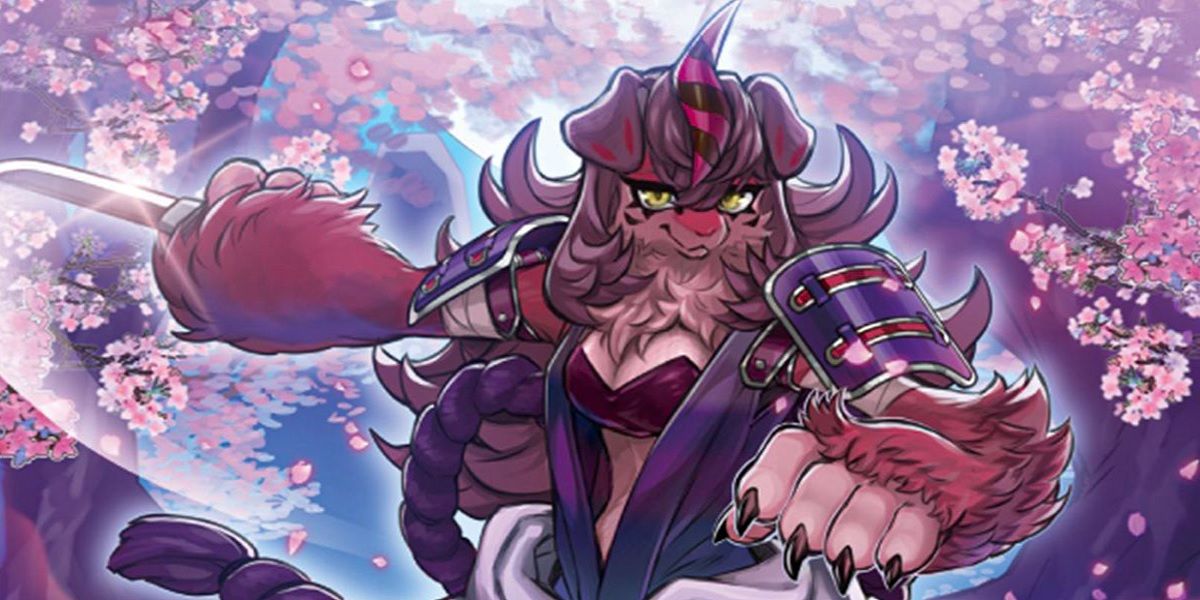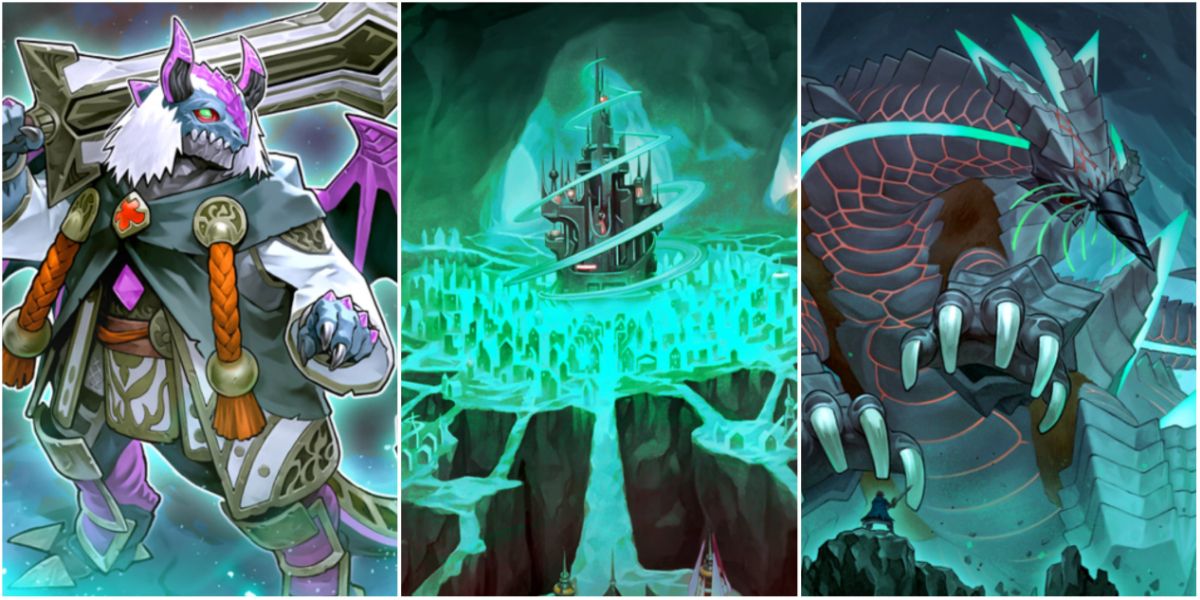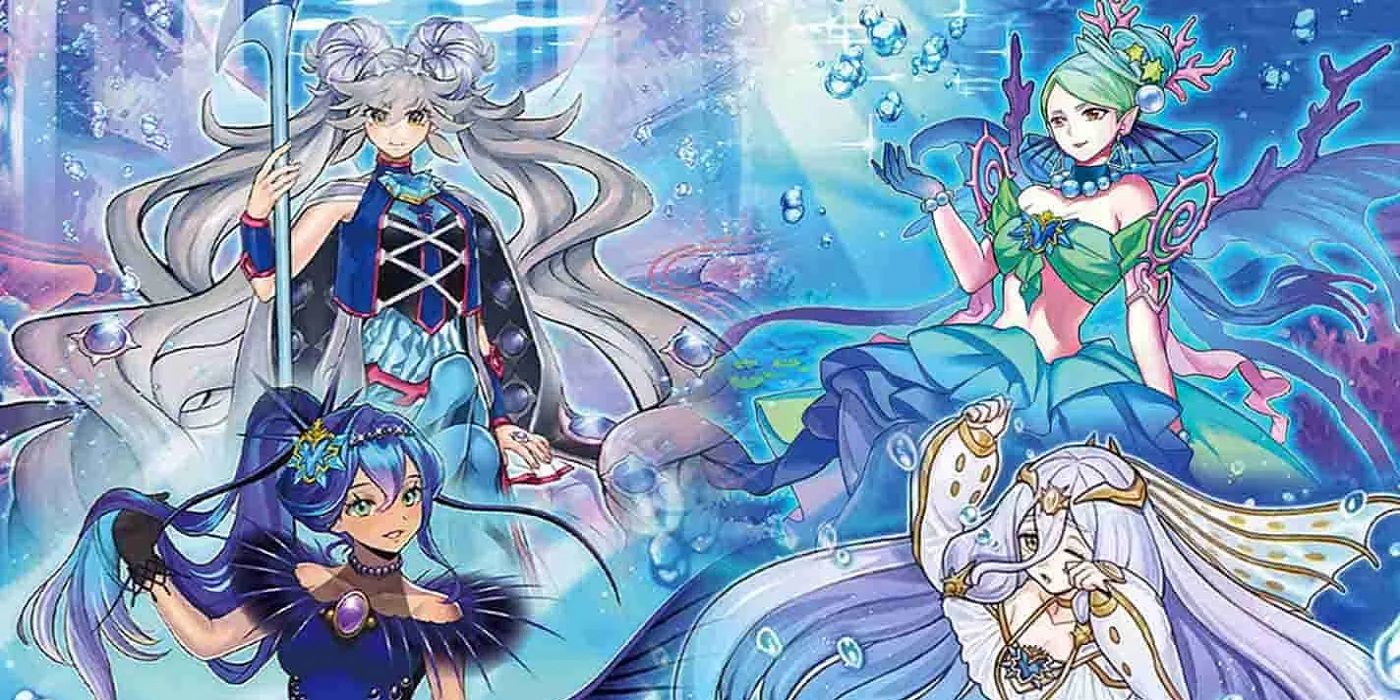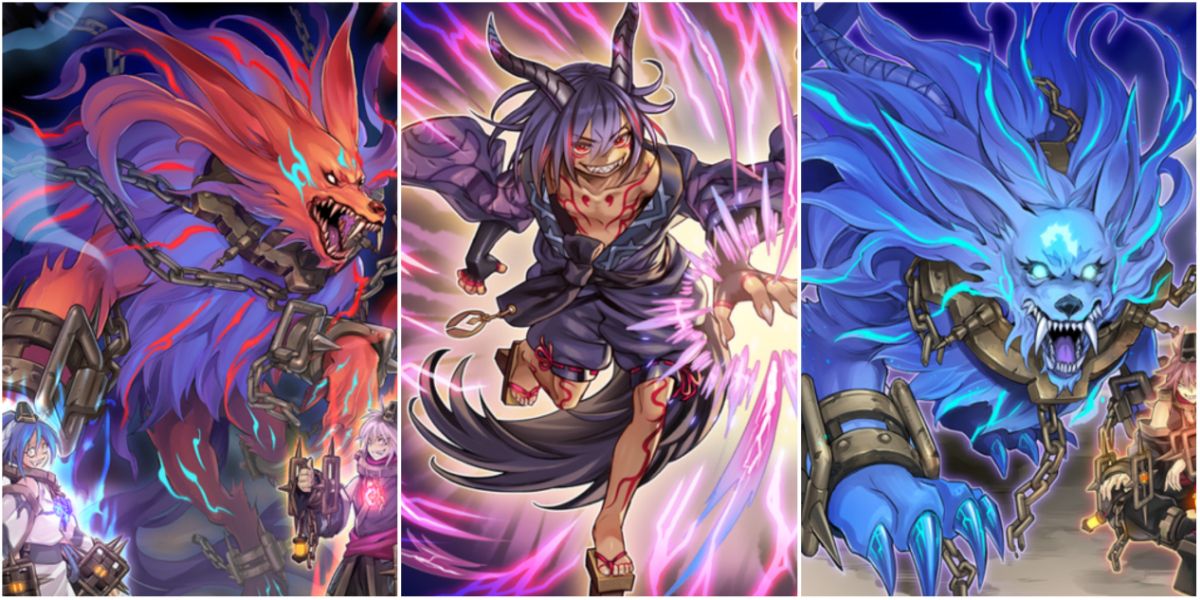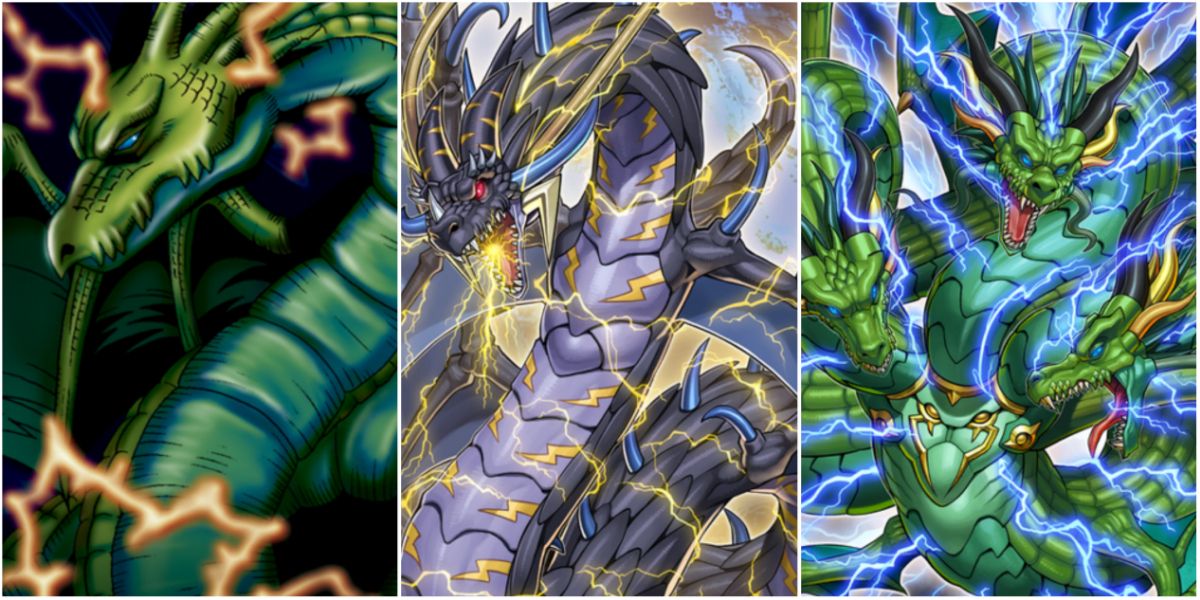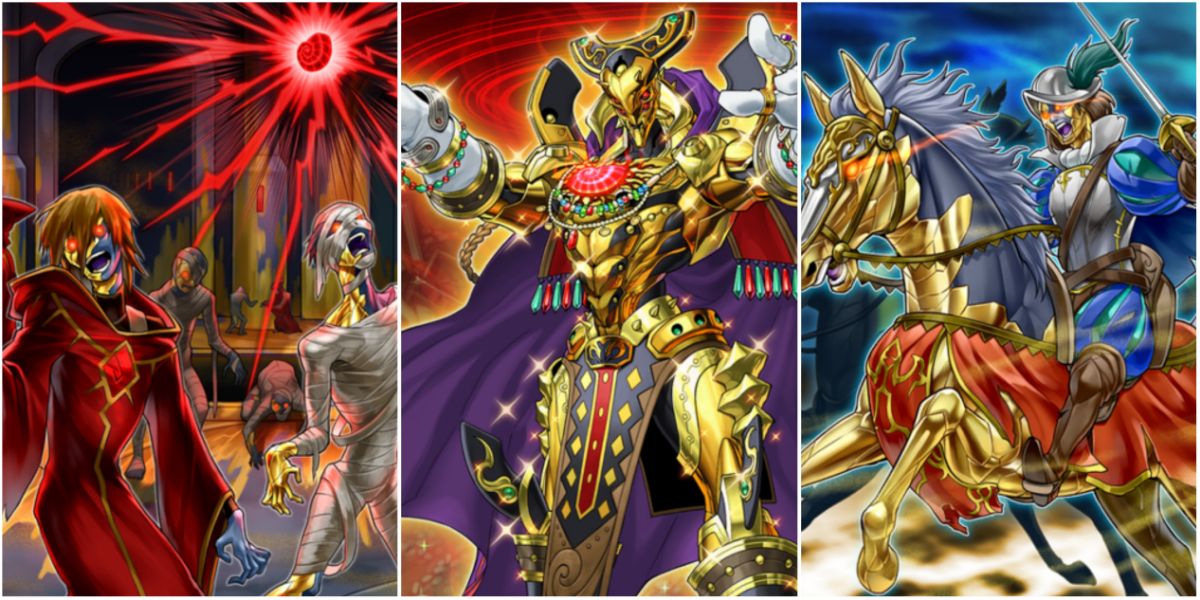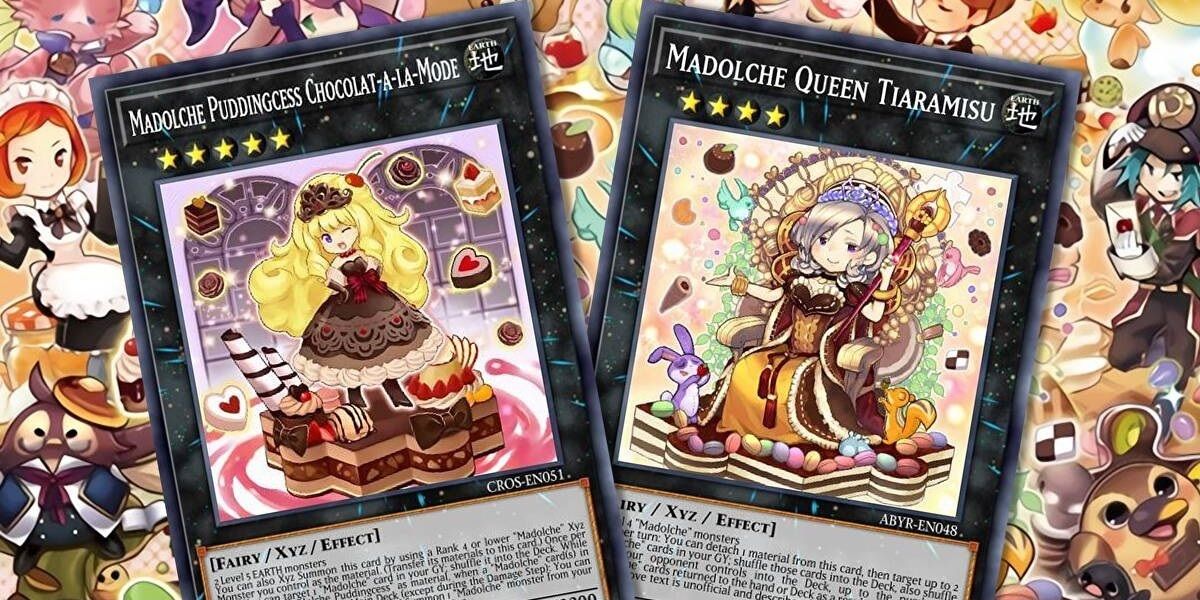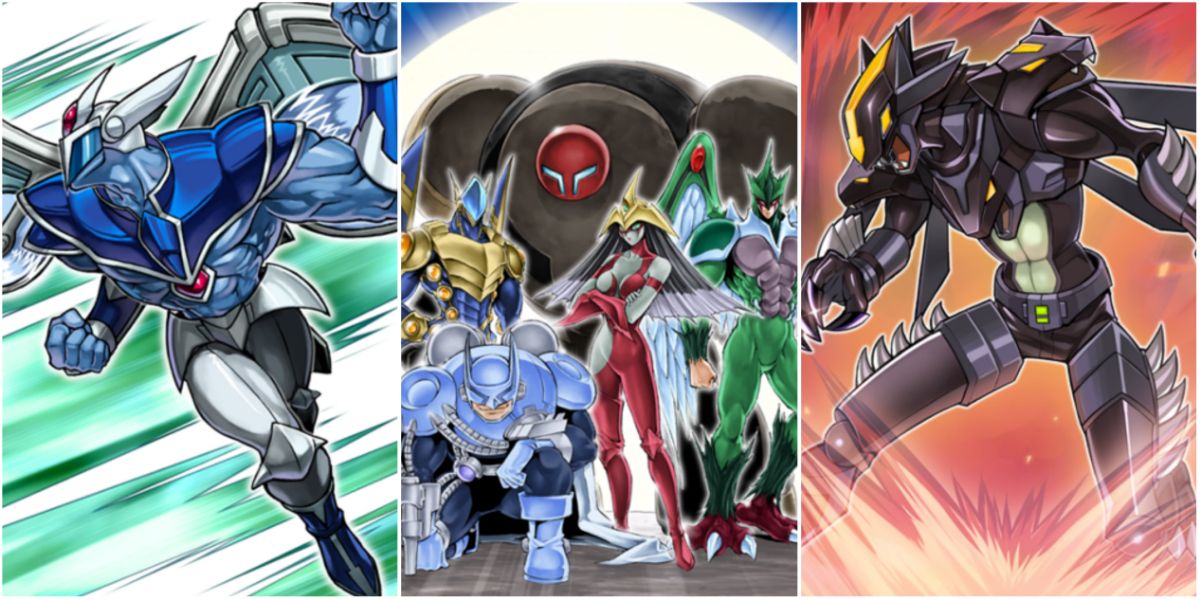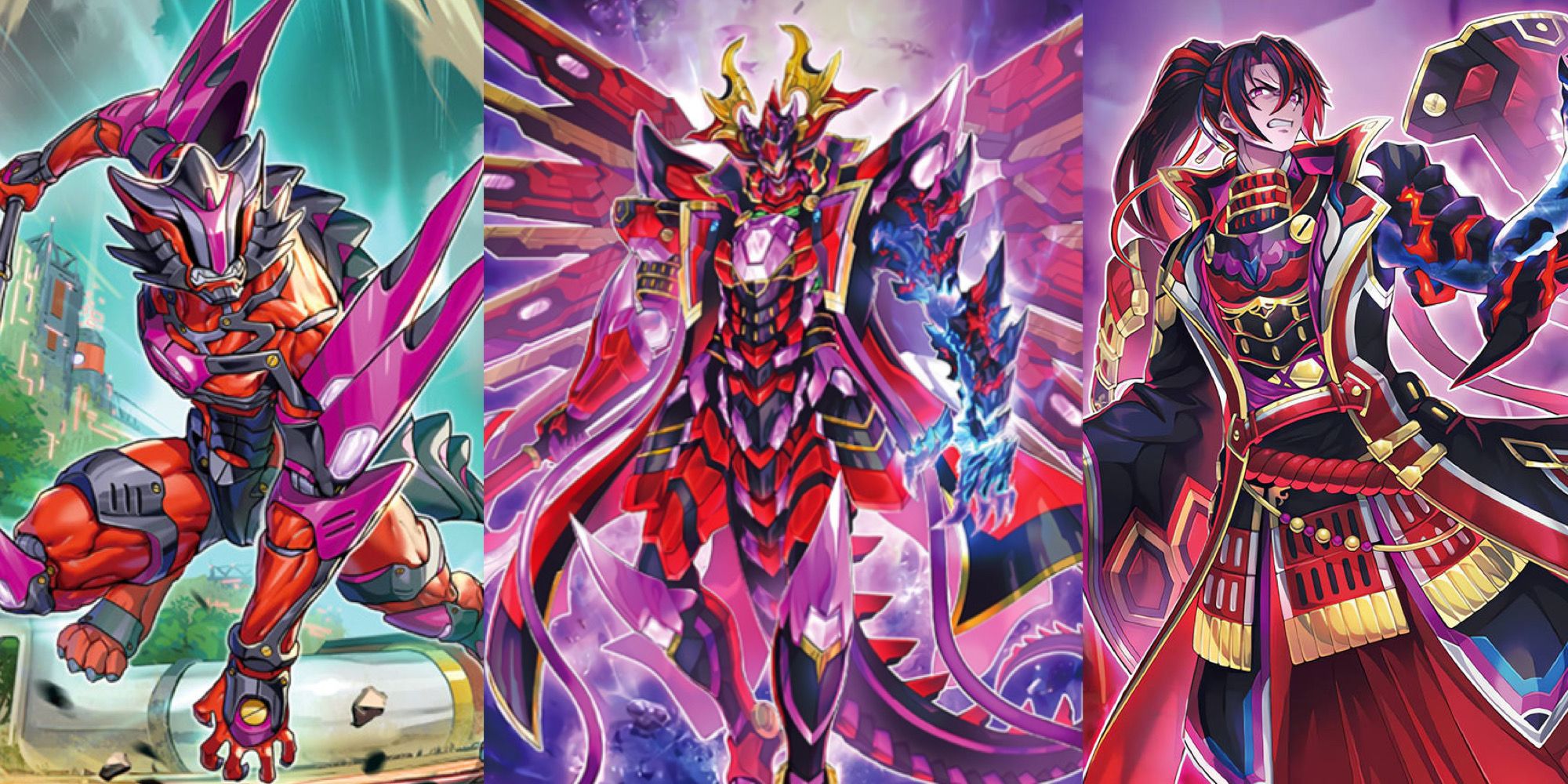Quick Links
Yu-Gi-Oh! has an incredibly difficult learning curve. Coming into the game, players need to be aware of hundreds of cards and dozens of decks that are all viable, if not top-tier, in the current metagame. More than anything else, players will want to win a game even if they're new to playing Yu-Gi-Oh!
Thankfully, there are still a bunch of decks available for new players to try out. These Yu-Gi-Oh! decks are largely straightforward rather than containing complex combos that would take several hours of studying to learn. Even without that complexity, beginners will be equipt to defeat the opponent either with large boss monsters or by altering the pace of the game to fit the player.
Updated July 13th, 2023, by Sage Ashford: The one thing that's the most fun about Yu-Gi-Oh is how Konami is always introducing not just new archetypes, but new cards for older archetypes. With that in mind, even decks that are just decent can get a considerable boost and become great. So we've updated this list with a handful of new decks for players who want more variety.
15 Traptrix
Traptrix is one of Yu-Gi-Oh!'s older archetypes at this point, but it always remains just relevant enough to keep getting wins. The focus is on a group of insect girls known as Traptrix, who can all interact with the classic "Trap Hole" Normal Trap cards.
- Traptrix Rafflesia
- Traptrix Myrmeleo
- Floodgate Trap Hole
- Traptrix Sera
What makes this a great Yu-Gi-Oh! deck for beginners is that thanks to its trap-focused playstyle, the player doesn't have to keep track of a bunch of cards shifting on and off the field to summon their monsters. With easily searchable Traps, it shouldn't be a problem for players to always keep control of the game. Traptrix even have a Structure Deck, and purchasing three of them will make it easy to build the core of the deck.
14 Spright
In Yu-Gi-Oh!, not many decks are able to make themselves known like Spright did when it first released. The deck is based around Level 2, Rank 2, and Link-2 monsters. With the ability to special summon themselves from the hand, they're fairly difficult to stop once they get going.
- Spright Blue
- Spright Jet
- Spright Starter
- Gigantic Spright
One of the key things keeping Spright going even after it was hit by the banlist involves the access to the Two-Axis Toolbox. Players can special summon out Toadally Awesome, one of the most powerful Xyz monsters, and use that to protect themselves while they build up an army of other Spright monsters. The deck is so good other beginner players might even want to know how to beat Spright.
13 Labrynth
The Labrynth deck has been around long enough that people had even learned some reliable strategies to beat them. However, the continued support the deck has received makes them relevant even today. Like other control decks, it doesn't rely on a ton of monster summoning to get the job done. Instead, the focus with Labrynth is creating a deck with a heavy trap focus.
- Lady Labrynth of the Silver Castle
- Lovely Labrynth of the Silver Castle
- Welcome Labrynth
- Big Welcome Labrynth
Each monster in Labrynth gains different effects when a Normal Trap Card is activated, allowing the player to gain advantage. It's a fun Yu-Gi-Oh! deck, but it also encourages use of classic Normal Trap Cards, meaning even beginners will likely know what many of the cards do already. With that, it won't take long for them to learn the rest of the deck.
12 Purrely
The Purrely archetype isn't just one of the cutest archetypes ever made, it's also one of the best Yu-Gi-Oh! decks. The deck is built around a bunch of adorable cat-like monsters of low levels, who rely on quick-play spells to gain different effects.
- Purrely Delicious Memory
- Purrely Happy Memory
- Expurrely Noir
- Epurrely Beauty
The real trick to the deck is making Xyz monsters that can then use quick-play spells as materials to grant them new abilities. While the lower Ranked Epurrely Xyz monsters aren't able to do much, enough materials allow them to "evolve" into vastly more powerful Expurrely monsters. If players can get the hang of attaching quick-play spells to Xyz monsters, the rest is straightforward: have monsters with much more ATK, beat up all the smaller monsters.
11 Mathmech
Mathmechs are as straightforward as they sound. They're a group of robots named after math operations. That said, people shouldn't get too hung up on the "math" part, as this deck can be incredibly simple.
- Mathmech Addition
- Mathmech Circular
- Geomathmech Final Sigma
- Primatech Alembertian
There's a lot this deck can do, but beginner players will want to focus on the deck's synchro boss monster, Geomathmech Final Sigma. Final Sigma, when summoned to the Extra Monster Zone, is unaffected by card effects, and inflicts double damage to the opponent's monsters. With the other cards in the deck modifying attack and defense, this can be an easy One Turn Kill.
10 Fur Hire
Fur Hire was, at one point, not a great deck to start with. However, given what the deck was capable of, it was only a matter of time before it turned into a respectable deck. Made up of a mix of monsters from all levels, the smaller Fur Hire works off special summoning other Fur Hire to the field either from the hand or graveyard to activate their effects. Meanwhile, the bigger ones can't special summon monsters, but gain their effects upon hitting the field.
- Beat, Bladesman Fur Hire
- Rafale, Champion Fur Hire
- Folgo, Justice Fur Hire
- Donner, Dagger Fur Hire
The key boss monsters for the deck are Rafale and Folgo. Rafale negates monster effects by discarding Fur Hire cards. Far more important, though, is Folgo, an Extra Deck Link monster that draws three cards whenever the player has three monsters of different Types on the field and destroys an opponent's monster. The overwhelming card advantage will seal the fate of most opponents.
9 Subterrors
Subterrors are beginner-friendly because, rather than memorizing a ton of combos, the goal is to hide behind as many traps as possible. The entire deck is based around flip summoning and protecting its monsters via the use of the field spell, The Hidden City, among other tools.
- Subterror Guru
- Subterror Fiendess
- The Hidden City
- Summon Limit
This deck is a good idea for players who don’t want to spend hours trying to learn combos that take five minutes long to execute. Instead, the idea is to slow the opponent down to the player’s pace and force them to figure out how to get past their back row.
8 Marincess
Though it came from an anime where nearly every deck was somehow good, Marincess wasn't a serious deck for years. It had a few neat tricks, but ultimately couldn't stand up to some of the more powerful meta decks of the past.
- Marincess Dive
- Marincess Blue Tang
- Marincess Wave
- Marincess Great Bubble Reef
However, Konami gave them a big boost with the set Legendary Duelists: Duels from the Deep, adding another boss monster option in Aqua Argonaut. They also recieved some more consistency tools in Marincess Springirl and Marincess Dive. There's a minor learning curve to the deck, but since most plays will look the same, it won't take too long for most players to adapt.
7 Unchained
For those who want to frustrate their opponent, the Unchained deck is right up their alley. The deck is based on destroying its own cards to gain effects, but it also involves stealing the opponent’s monsters via a plethora of effects.
- Unchained Twins – Aruha
- Unchained Twins – Rakea
- Abominable Unchained Soul
- Unchained Abomination
Unchained Soul Of Rage and Unchained Soul Of Anguish can link summon into the deck’s Link 4 monsters by using themselves and an opponent's monster. There are very few ways around cards like that, and when combined with kaiju, this is a truly fearsome and frustrating deck that will ensure plenty of easy wins.
6 Thunder Dragon
Thunder Dragon is a lot better than it should be, considering the deck lost its best card in Thunder Dragon Colossus. The comeback largely comes from combining the deck with Chaos cards and the versatile Red-Eyes archetype. Originally based on a card from 2002, the archetype has grown greatly from its humble roots.
- Thunder Dragon
- Thunder Dragondark
- Thunder Dragon Colossus
- Thunder Dragon Titan
Without needing to spend too much time figuring out combos, players can easily figure out how to get some impressive boards with plenty of dragons and huge link monsters. Thunder Dragons are especially noteworthy in Yu-Gi-Oh! Master Duel, where Colossus is still legal to use. It's also got some neat tricks to get around decks like Runick, thanks to how much it uses the banish zone.
5 Eldlich
Drawing upon the legend of El Dorado, Eldlich offers an easy-to-play deck that can control the game while also bringing out powerful threats at every turn. This deck relies upon the titular Eldlich and packs plenty of ways to search him out and bring him back again and again.
- Eldlich The Golden Lord
- Cursed Eldland
- Conquistador of the Golden Land
- Eldlixer of Scarlet Sanguine
While Eldlich may be the centerpiece of this deck, the various Golden Land and Eldlixer cards also offer plenty of support for other zombie-based strategies. Vampires, in particular, are an excellent addition, as they can make great use of the monsters each Golden Land trap creates.
4 Madolche
The Madolche deck has been one of Yu-Gi-Oh!'s most consistent decks for years. The deck is made up of adorable kids with a bunch of dessert-themed puns that shuffle back into the deck rather than going to the graveyard when destroyed. They're a special deck because they've attained the status of a deck that will always be "good," even if they're never great. That makes them perfect for newcomers, since, no matter the era, players can come back and try this deck out.
- Madolche Magileine
- Madolche Salon
- Madolche Queen Tiaramisu
- Madolche Chocolat-a-la-mode
The key play with this deck is getting to Madolche Queen Tiaramisu, which has the ability to shuffle cards on the opponent's field back into the deck without targeting. Since the deck is insanely consistent, getting to her isn't a problem, meaning the only thing the player has to worry about is making sure the opponent can't stop them.
3 Floowandereeze
For players who have always wished they had another normal summon, there's Floowandereeze. Telling the tales of three birds as they travel across the world making friends, this deck allows the player to flood the field with massive chains of normal, and tribute summons while reclaiming their banished cards at the same time.
- Floowandereeze & Empen
- Dimension Shifter
- Floowandereeze & Robina
- Raiza the Mega Monarch
The entire main goal of this deck is to stop the opponent from making plays. Dimension Shifter keeps their cards banished while Floowandereeze cards return from the banished zone. Meanwhile, Empen locks down special summoned monster effects, and Raiza bounces cards back to the opponent's hand. Floowandereeze and the Unexplored Winds also allows the deck to tribute an opponent's monsters to bring out its own.
2 HERO
HERO is a classic Yu-Gi-Oh! archetype, one that’s been around since the GX era and has only gotten better. Being a deck of Warriors means it’s got access to one of the best searchers in the game in Reinforcement of the Army. Focusing on HEROes also means they have access to A Hero Lives and Elemental HERO Stratos.
- A Hero Lives
- Elemental HERO Dark Law
- Elemental HERO Stratos
- Mask Change
The hardest thing about building HEROes after figuring out which version to use – whether Elemental, Destiny, Masked, or another group – is figuring out how small the basic engine should be. Other than that, it’s a simple matter of summoning large monsters and claiming victory.
1 Kashtira
The Kashtira deck might not be the easiest deck in Yu-Gi-Oh!, but the small learning curve is worth the benefit. The entire deck is based around level 7 Psychic monsters, and it focuses around two different strategies. The first strategy involves banishing the opponent's monsters through the effects of various Kashtira monsters. This "banish mill" strategy is effective, as not many decks can recover from having their cards banished face-down.
- Kashtira Fenrir
- Kashtira Unicorn
- Kashtira Ariseheart
- Kashtira Shangri-Ira
It's the second strategy though that truly makes Kashtira a threat. The power of Kashtira Shangri-Ira renders an opponent's monster or spell and trap card zones unusable each time an opponent's card is banished. With no restriction to the effect, Shangri-Ira can quickly render the entire field unplayable.

